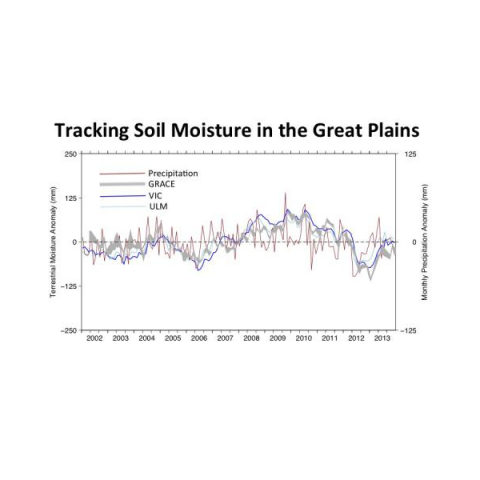Fundamental Physics of Great Plains Drought
The U.S. Great Plains experienced a severe drought in 2012, symptoms of which included severe rainfall deficits and record setting high temperatures. An outstanding question is the relationship between regional precipitation deficits and heat waves, and further their mutual effects on soil moisture conditions. Land surface model simulations were conducted to quantify the combined and separate effects of rainfall deficits and air temperature on soil moisture--indicating an approximate 3:1 ratio of precipitation versus temperature control on soil drying. The plot on the left shows agreement in monthly anomalies (2002-2013) among independent estimates of terrestrial water anomalies from the GRACE satellite and two land surface models, ULM, and VIC (left ordinate axis) as well as observed precipitation (right ordinate axis) averaged over the Great Plains domain. A further question addressed in this work is the role of human-induced climate change on future Great Plains drought. Combining an understanding of the fundamental physics of drought with plausible future temperature and precipitation changes, the risks for unprecedented future drought are assessed and deemed to be unlikely.
This project is a collaboration with the National Oceanic and Atmospheric Administration, Physical Sciences Division.

